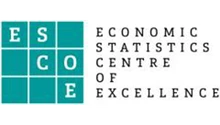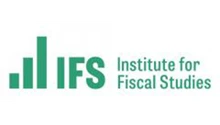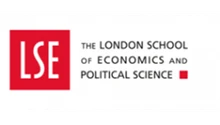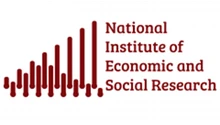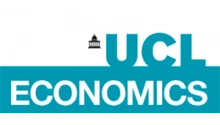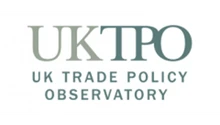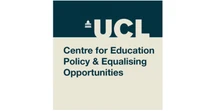Western countries imposed extensive sanctions on Russia after the invasion of Ukraine in February 2022. But the measures were unilateral and piecemeal – and while they have been effective in disrupting the Russian economy, evasion and ‘trade deflection’ through third countries limits their impact.
On 24 February 2022, Russia launched its full-scale invasion of Ukraine. The response by the West – including Australia, Canada, the European Union (EU), Japan, the UK and the United States – was to impose an unprecedented raft of far-reaching unilateral sanctions against President Putin’s regime (see Figure 1).
These included restrictions on Russia’s financial sector (including its central bank); the removal of Russia from SWIFT interbank transactions; and new rules on goods and services in strategic sectors of the Russian economy (such as aviation, energy and shipping). Also announced were sanctions on a wide circle of designated individuals, including those close to Putin; those facilitating the military action (such as the Wagner Group); soldiers and officials in occupied Ukrainian territory; and oligarchs with assets in Western countries deemed to be associated with Putin or with interests in critical sectors (EU Commission, 2024).
Figure 1: Countries with sanctions against Russia
Source: Castellum.AI 2025
The 2022 round of sanctions built on measures first introduced in 2014 (in response to Russia’s annexation of Crimea and neighbouring areas). Subsequent policies have been brought in to address the evasion of sanctions, extending their reach to ‘enablers’ of the war based outside Russia and to the individuals committing war crimes and breaches of human rights in occupied Ukrainian territory.
To gain an understanding of the wide effect of the sanctions, there is an EU sanctions tracker, a United States tracker and a searchable database maintained by the US Office of Foreign Assets Control (OFAC). The UK has also published a list of people sanctioned under the 2018 Anti-Money Laundering Act, and there are regular updates on measures taken to curb Russian aggression (UK government, 2025).
There are, of course, some gaps in the sanctions regime, and to some extent Russia has managed to evade their full effects. For example, the Kremlin has replaced pipeline exports of oil to Western Europe with tanker-shipped oil to other countries through a ‘shadow fleet’.
That being said, the effect of Western sanctions on both Russia’s GDP and levels of personal disposable income has been considerable (IMF, 2025). After three years of war, Russian GDP is now 10-12% below pre-invasion trends. Personal disposable income is 20-25% below where it would have been without the conflict (Disney, 2023; Korhonen, 2023).
With both inflation and domestic interest rates in Russia currently running at over 20% – as well as the loss of foreign exchange reserves, bankruptcies rising in domestic businesses and real estate, and increasing difficulties in interbank and state bank transactions – Russia’s economy looks increasingly weak. All this is happening against the backdrop of a rapid expansion of Russia’s war economy at the expense of both private sector spending and other public sector activity.
Three years on, what questions remain about the use of sanctions?
The aim of the sanctions against Russia has two dimensions. The first is economic: to disrupt trade and cripple the Russian economy (that is, reduce its GDP). The second is political: supporting Ukraine and coercing Putin into bringing an end to the war.
To evaluate the effectiveness of these sanctions, we can organise our ideas around a set of questions:
- On what legal basis are sanctions against states and individuals established?
- How are sanctions enforced and how do these enforcement measures vary across sanctioning countries?
- Can states, and especially individuals, have recourse to law to alleviate or offset sanctions?
- If sanctioned assets are frozen, what is the legal basis for ‘freeing up’ those assets for assisting Ukraine?
- How can sanctioning states deal with attempts to bypass sanctions via third-party countries?
- What further sanctions could be applied to increase pressure on Russia?
On what legal basis are sanctions established?
Sanctions are economic levers used as tools of foreign policy. As a political signal, they express disapproval of a particular foreign regime (examples from history include sanctions against Iran, South Africa, Southern Rhodesia and Russia), and they can dissuade and/or coerce behaviour. The sanctions against Russia are more far-reaching than previous examples, targeting the Russian state, its residents and people residing in third-party countries who are aiding the Kremlin through various modes of support.
The 2022 sanctions were imposed swiftly, without democratic discussion or thorough economic analysis. In theory, sanctions work best when imposed globally and agreed by the United Nations (UN). But because Russia and China (a close ally of Putin) are permanent members of the UN Security Council and are able to veto council resolutions, this was not possible. This meant that individual states (like the UK and the United States) were forced to use their own domestic legislative powers to impose unilateral sanctions and enforcement mechanisms.
The United States has the most far-reaching powers to impose sanctions, and uses sanctions extensively as a form of foreign and trade policy (see Figure 2). Early in the war, Russia had used ‘middlemen’ such as shell companies and other facilitators to evade the sanctions regimes, gaining access to the US financial system as well as procuring critical military hardware.
Figure 2: Count of sanctions against Russia by source
Source: Castellum.AI 2025
In December 2023, President Biden signed an executive order expanding OFAC’s authority to impose sanctions on foreign financial institutions engaging in transactions involving Russia’s military-industrial base. Foreign financial institutions now face new risks related to secondary sanctions as well as restrictions on the import of certain Russian goods. The penalty for non-compliance is severe: total exclusion of the foreign financial institution from the US dollar-based global financial system.
The EU has used its common foreign and security policy as the basis for sanctions against Russia. But while the EU established an umbrella framework, member states had differing opinions on the types of sanctions to implement, particularly in states with closer ties to Putin, such as Hungary, or those dependent on Russian energy, like Germany (EU Commission, 2025).
After Brexit, the UK continued with the EU sanctions regime, developing a set of UK domestic measures in secondary legislation (House of Commons Library, 2025).
It is important to consider how sanctions work. Taking a step back, sanctions – which are imposed by governments or state executives – influence trade relations and affect companies that export and import Russian goods or provide components in a supply chain. Although imposed by the state, the sanctions are essentially carried out by private firms (which cease trading with Russian suppliers under the new wartime rules).
This means that the sanctions affect the private sector through reporting obligations and the threat of civil actions, criminal penalties or reputational damage. Indeed, Western governments rely heavily on domestic private firms to implement their policy strategy against the Russians. But this doesn’t always work: according to an article published in the Financial Times in late 2023, more than 100 British companies admitted breaching sanctions on Russia. Sometimes the bite doesn’t live up to the bark.
How can sanctioning states deal with attempts to bypass measures?
The Russian economy has developed some level of resilience to Western sanctions. While export embargoes have affected ordinary Russian people, this has not led to regime change in Russia. Elites have been able to circumvent restrictions on goods through an increase in ‘back door’ or indirect exports through central Asian states. For example, Kazakhstan has seen a significant increase in trade with Russia: from January to October 2022, Kazakh companies exported more than $575 million of electronics goods to Russia – an 18 % increase from the same period in 2021.
To counter the developing parallel trade, the EU, the UK and the United States have all tightened their measures. For example, the UK has added electronic components like integrated circuits and radio frequency transceiver modules (which the Russian military uses in its weapons systems) to the Common High Priority Items List. This database can then be updated as the situation develops. Under this system, companies are also required to guarantee that restricted items are not directly or indirectly exported to Russia.
How are sanctions enforced and how do these enforcement measures vary across sanctioning countries?
As noted, private firms must now take responsibility for foreign policy and trade measures through onerous reporting obligations and due diligence throughout their supply chains. Failure to comply can result in criminal action and fines.
A major limitation of the regime of measures imported against Russia has been the fragmentation and under-resourced enforcement of sanctions in the EU and the UK. Currently, in the EU, each member state uses its own laws to enforce sanctions regulations. This is set to change: by May 2025, the member states must implement a new directive to harmonise the enforcement of sanctions across the member states.
The institutional framework of the UK is messy. HM Revenue and Customs, the National Crime Agency (NCA) and the Border Force were the principal bodies charged with enforcing the anti-Russia sanctions. Two new entities have since been brought in: the Office for Trade Sanctions and the Office for Financial Sanctions. This has led to fragmentation of enforcement with very few reported successful actions. Many investigations are resolved without public notice. To date, the NCA has brought only one criminal sanctions case.
In contrast, the United States has more experience with using aggressive measures. OFAC is designated for the administration and enforcement of economic and trade sanctions. OFAC’s regulations impose strict liability: the agency does not have to prove fault or intent to enter an enforcement action and issue a civil penalty. And if a person wilfully violates US sanctions laws, the Department of Justice and the US Attorney General may pursue criminal investigations and enforcement actions. The United States is also prepared to take extra-territorial action, especially where any secondary sanctions breach has a connection with the dollar.
What should happen to the frozen assets? Will they be seized? Can they be used for reparations or rebuilding Ukraine?
Starting with individuals and firms (that is, non-state persons/institutions), as of January 2025, 1,733 individuals and 382 entities are subject to UK sanctions under the Russia regime and almost 2,400 individuals and entities are subject to EU sanctions. The wide-ranging group of individuals and companies affected by the measures has resulted in billions of frozen pounds and dollars, including significant assets in companies and real estate.
For both individuals and firms, there appear to be no incentives that they can work towards to realise their assets, or for the assets to be put to effective use. Currently, people who have been targeted (because they are deemed close associates of Putin or participate in critical economic sectors) have no indication if they will ever be able to access their assets again. Nor have they been given opportunities for the assets to be ‘unfrozen’, unless they take legal action.
Most legal attempts to challenge the sanction regimes have been unsuccessful. At the time of writing, the first case has just reached the UK Supreme Court – a claim brought by Eugene Shvidler, an associate of Roman Abramovich.
Currently, the sanctions policy offers no clear incentives for individuals to change their behaviour. For example, Abramovich offered to donate the proceeds of the sale of Chelsea Football Club in 2022 (valued at £2.5 billion) to the victims of the war both in Russia and Ukraine. But the UK government refused to allow the funds to be used for such broad purposes.
Turning to frozen Russian state assets, in this case there are incentives to change tack. The Kremlin could free itself from the punitive measures by stopping aggression towards Kyiv, withdrawing from occupied territories, agreeing to a global peacekeeping force in Ukraine and making reparations to the Ukrainian state and individuals harmed by the war. This is an extremely tall order, and one to which Russia is unlikely to concede any time soon.
The legal backdrop of the frozen state assets is also highly complex. This is due to their implementation as unilateral actions by individual states and the EU, rather than via the UN. As it stands, Russia could resort to international law to challenge the measures by invoking the principle of non-intervention, the principle of sovereign equality of states, or state immunity.
Russia could also invoke trade rules, resorting to the obligations under the rules of the World Trade Organization (WTO), obligations under bilateral investment treaties, or customary international law rules relating to the treatment of foreign investors. That being said, each of these pieces of legislation have exceptions for measures taken on security grounds.
In response to Russian claims about the illegality of the sanctions, the states imposing the sanctions may also argue that these measures constitute counter-measures under the law of state responsibility. Such measures can be justified when taken against a state acting unlawfully. In the Russian context, this idea is controversial because it undermines ‘a key area of global consensus in international economic law: the foreign sovereign immunity of central bank assets, especially foreign currency reserves’.
A leading international lawyer, Ingrid Weurth Brunk, has argued that taking dramatic steps to weaken the consensus in international law may not benefit the states that are imposing the measures, as it could compromise Western leadership on the war in Ukraine, as well as undermine confidence in placing assets in a central bank in the West in the future.
As a compromise, in 2024, the EU agreed to an ‘extraordinary’ approach to mobilising the €210 billion worth of frozen Russian central bank assets located in Belgium. It created the Ukraine Loan Cooperation Mechanism as part of its G7 commitment to provide up to $50 billion in financial support to Ukraine. The revenues from the frozen Russian assets are to be used to help Ukraine to service and repay loans already received from EU and G7 funds (European Parliament, 2024). The idea is to force Russia to foot the bill for Ukraine’s continued war effort.
Conclusion
It is important to mark the third anniversary of the escalation of Russian aggression towards Ukraine. But given the current attempts by President Trump to end the war (potentially without proper consultation with the Zelensky government or its European allies), it would be foolhardy to predict that further sanctions would be necessary or sufficient to bring Russia to the negotiating table with Ukraine. The slow puncture of the Russian economy seems terribly sluggish – and it comes at a huge cost in terms of human life, economic hardship and global stability.
Where can I find out more?
- Royal United Services Institute.
- Atlantic Council.
- Kyiv School of Economics Institute: KSE Sanctions.
- Petersen Institute: PIIE.
- European Union: EEAS.
- Office of Foreign Asset Control (US): Sanctions List Search.
- Brookings Institute: The Brookings Sanctions Tracker.
Who are experts on this question?
- Richard Disney
- Sergei Guriev
- Yuriy Gorodnichenko
- Tom Keatinge, Royal United Services Institute
- Iikka Korhonen
- Maya Lester KC, Brick Court Chambers
- Tymofiy Mylovanov
- Elina Ribakova, PIIE









